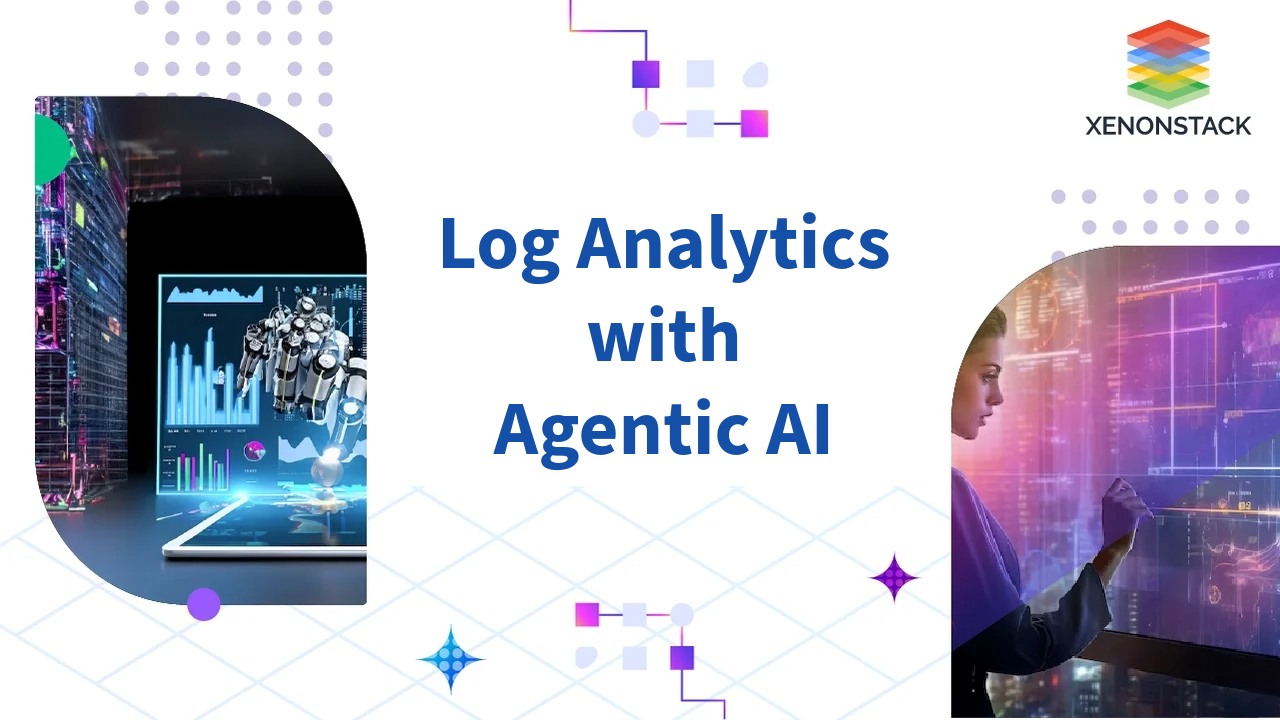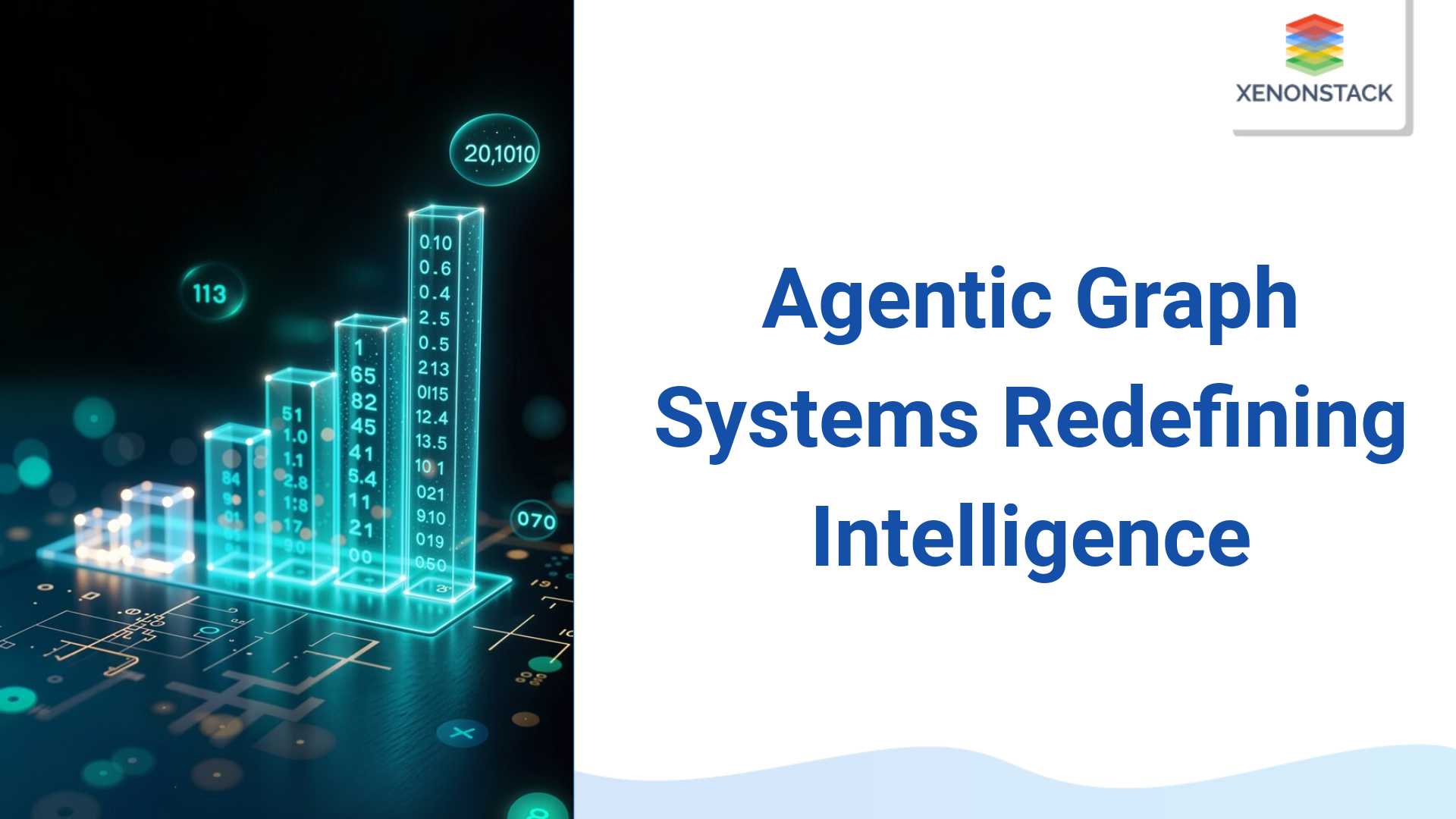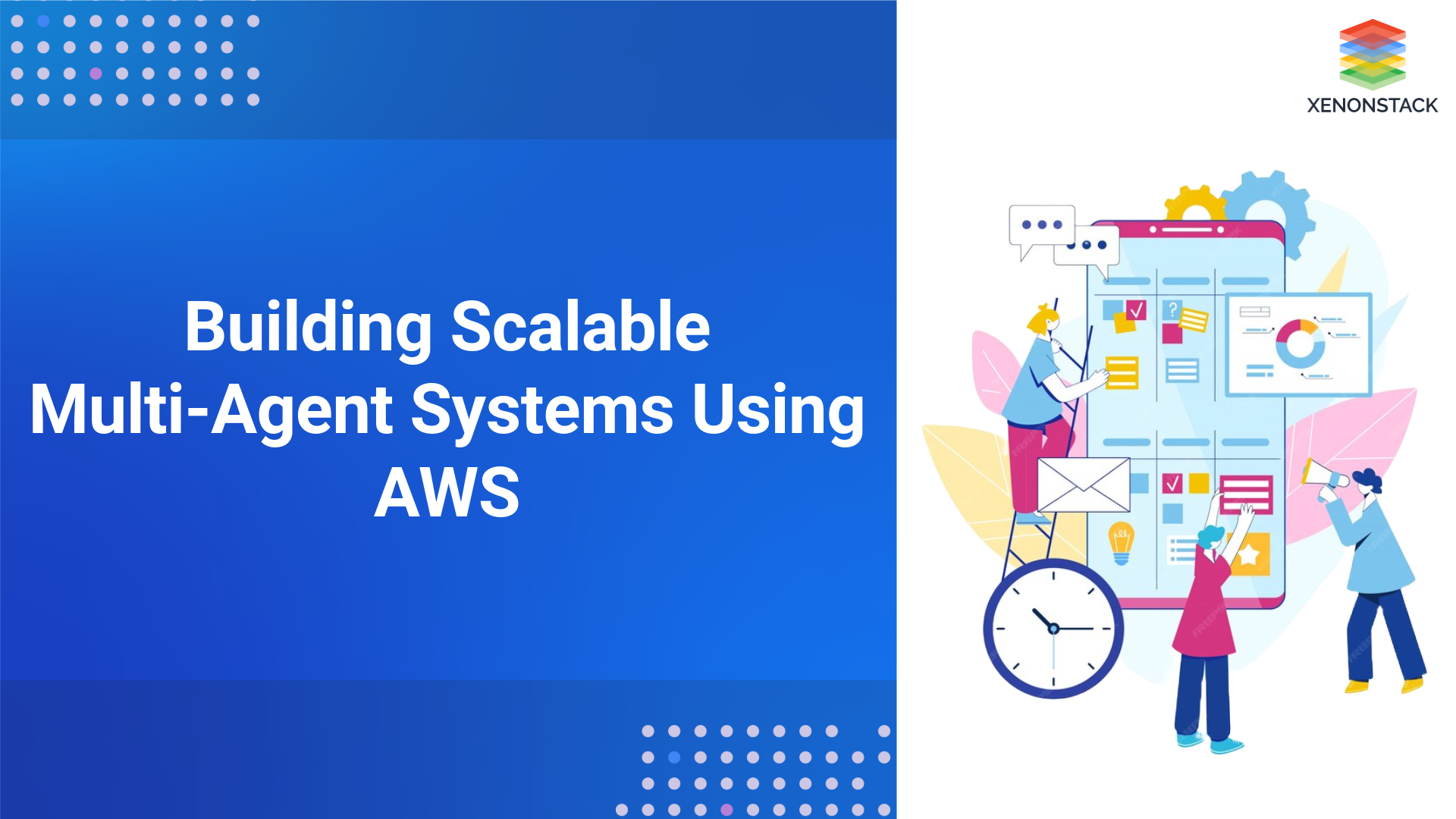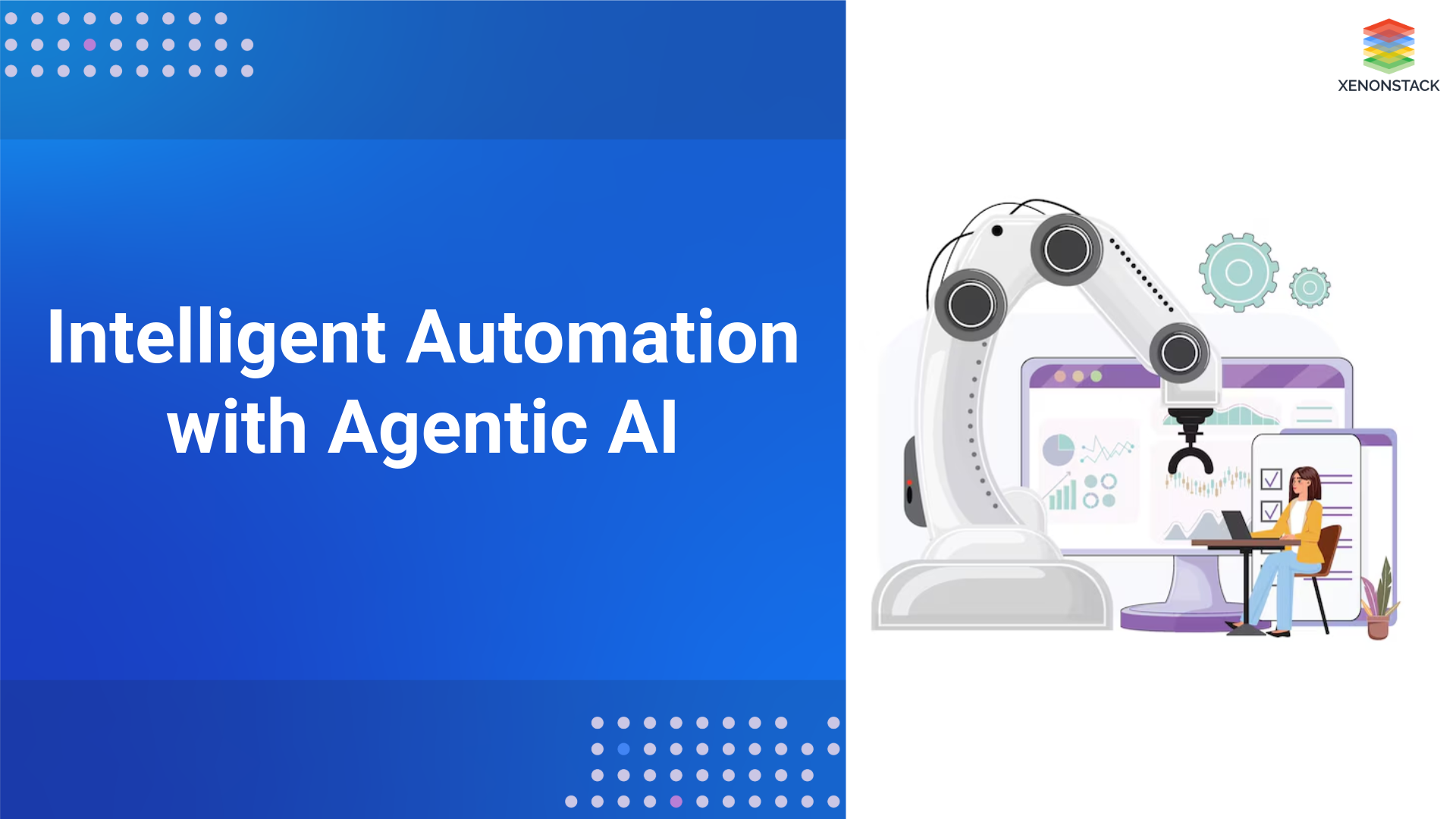
Introduction to Log Analytics and Agentic AI
Log data is a goldmine of information, constituting a significant aspect of big data. The sheer volume and diversity of logs generated by systems, applications, and networks can be overwhelming, but the real value lies in harnessing this data effectively. The key lies in log analysis and analytics powered by autonomous AI agents.
Organizations are actively embracing automated solutions for log data analysis, such as log analytics with agentic AI, to address the rising need for precise and effective log analysis. By utilizing autonomous AI agents, businesses can effortlessly uncover valuable insights from extensive log data while benefiting from proactive problem-solving capabilities.
With technologies such as Machine Learning and Deep Neural Networks (DNN), next-generation server infrastructure spans immense Windows and Linux cluster environments. Log analytics plays a major role in managing real-time and log data. Additionally, for DNNs, application stacks don't only involve traditional system resources (CPUs, Memory) but also graphics processing units (GPUs). With nontraditional infrastructure environments, teams need highly flexible, scalable, and Windows and Linux-compatible services to troubleshoot and determine causes across the full stack. Agentic AI systems meet this need by operating autonomously across complex environments.
What is Log Data?
Before discussing the analytics of log files, we should understand what a log file is. A log is data produced automatically by the system that stores information about events occurring inside operating systems, networks, and applications. It stores data at regular intervals and can be presented as a pivot table or file. The records are arranged according to the log file or table time.
Examples of log types include:
-
Transaction logs: Contains information about uncommitted transactions, changes made by rollback operations, and changes not updated in the database. Performed to retain the ACID (Atomicity, Consistency, Isolation, Durability) property during crashes.
-
Message logs: For Internet Relay Chat (IRC), contains server messages during the time interval the user is connected to the channel. For Instant Messaging (IM), stores messages in encrypted form requiring a password to decrypt and view.
-
Audit logs: Records all access activities taking place within platforms like Hadoop Distributed File System (HDFS).
-
Event logs: Documents specific events in systems.
-
Error logs: Records system or application errors.
-
Security logs: Tracks security-related events and activities.
-
Syslog: From network devices including web servers, routers, switches, and printers. Syslog messages provide information about where, when, and why (address, timestamp, and log message).
-
Server logs: Created automatically and contains information about users (IP address, timestamp, requested documents).
-
Daemon logs: From systems like Docker, detailing interactions between containers, services, and host machines.
-
Pods logs: From Kubernetes, containing information from container collections sharing resources.
-
Cloud service logs: Such as Amazon CloudWatch Logs, used to monitor applications and systems.
Every software application and system produces log files. Logs are usually application-specific, making log analytics a crucial task for extracting valuable information, and one where autonomous AI agents can significantly improve efficiency.
History and Importance of Log Analytics
Since we started producing computer-generated records, we've been attempting to analyze them in mass. Devices, programs, networks, and other entities emit recordings, which are then time-sequenced into logs. The need for log analytics is further supported by the fact that these logs are frequently not adequately documented or uniformly created across apps or devices.
Indexing and crawling are essential aspects of log analytics. Without proper indexing and crawling, data updates won't occur properly, increasing the chance of duplicate values. Log analytics helps examine issues of crawling and indexing by analyzing the time taken to crawl data and identifying where significant time is spent.
For large websites, maintaining a record of changes is challenging. Log analytics allows updated changes to be retained regularly, helping determine website quality. From a business perspective, frequent crawling by search engines like Google indicates the value of products or services. Log analytics examines how often search engines view a site and helps ensure content freshness through timely updates.

Why Organizations Need Agentic AI for Log Analytics
Autonomous Search and Query Capabilities
All datasets are thoroughly analyzed with powerful log queries autonomously executed by AI agents, which speed up threat detection and performance debugging. Organizations can discover "unknowns" as AI agents proactively explore log data, providing users with real-time insights without the need for manual query construction.
Advanced Autonomous Analytics
AI agents use machine learning for thorough monitoring and alerting to identify risks and solve performance issues faster. These agents can independently run features like Log Compare, Log Reduce, Outlier Detection, and use flexible query language to immediately identify the root cause of security or operations problems without human intervention.
Complete Visibility with Minimal Oversight
AI agents can unify logs, events, metrics, and traces, making the interpretation of vast amounts of data easier and faster without constant human supervision. Pre-configured dashboards maintained by AI agents save time by making all stack components visible. Special features like partitions and scheduled views allow users to gain visibility from relevant datasets, all managed by autonomous systems.
Real-time Insights and Response
Log data can be visualized using rich data visualization on standard or custom dashboards, with AI agents autonomously updating these visuals as new patterns emerge. Machine learning-driven threat detection, integrated threat intelligence correlation, and deep search-based investigation are performed by AI agents that provide profound performance and security insights, while also taking initial remediation steps.
Agentic AI in Log Analytics
The generation of larger and more intricate logs has been a direct result of software systems' increasing scale and complexity. Modern software systems, such as commercial cloud applications, generate large amounts of data—approximately gigabytes per hour. Distinguishing between logs from usual business activities and those indicating malicious behavior becomes impossible with traditional methods.
Autonomous AI agents have shown they can outperform both traditional systems and humans in tasks involving a lot of information, allowing machines to drive cars, identify pictures, and spot cyber threats without human oversight.
Using agentic AI for log analytics benefits organizations by:
1. Autonomous Data Organization
Logs are like written records; agentic AI systems using Natural Language Processing (NLP) techniques can autonomously organize them neatly, making it easy to find specific logs without manual categorization.
2. Proactive Problem Detection
Agentic AI can autonomously monitor and automatically find issues and troubles across systems, even with many logs, often detecting problems before human operators would notice them.
3. Intelligent Alert Management
Traditional log tools sometimes give too many alerts, most not being real problems. With Agentic AI, systems only generate alerts when there's something significant, helping avoid false alarms. Moreover, AI agents can prioritize alerts based on severity and potential impact.
4. Predictive Anomaly Detection and Resolution
Before big problems happen, small issues usually go unnoticed. Agentic AI systems can catch these early signs before they become significant issues and can often implement resolution strategies without human intervention.
The increasing adoption of autonomous AI systems has led to significant advancements in how organizations manage their infrastructure. These agentic AI tools can autonomously monitor, detect, analyze, and often remediate issues, potentially reshaping multiple aspects of IT operations and security.
Log Analysis With Autonomous AI Agents
By harnessing the capabilities of agentic AI, which goes beyond traditional AI by exhibiting autonomous decision-making and action-taking capabilities, log analytics can be completely revolutionized.
1. Autonomous Anomaly Detection and Response
Anomaly detection with agentic AI represents a cutting-edge approach to identifying and addressing irregular patterns or unusual events within vast datasets. Unlike rule-based methods or passive AI, autonomous AI agents can adapt and learn by independently exploring an organization's log data. These agents can identify regular behavior patterns and, over time, detect abnormalities that could indicate security threats, system malfunctions, or performance issues.
What distinguishes agentic AI is its ability to not only detect anomalies but to autonomously respond to them based on predefined policies or learned behaviors. By dynamically evolving its understanding of normal patterns and appropriate responses, agentic AI provides a more adaptive and comprehensive solution for enhancing cybersecurity posture and operational efficiency through intelligent log analysis and automated incident response.
2. Autonomous Predictive Analytics and Remediation
Instead of relying on a reactive approach, companies should opt for a proactive approach that utilizes agentic AI to detect, locate, and remediate unusual logs effectively.
This approach goes beyond traditional retrospective analysis by predicting future events based on historical log data patterns and taking preventive actions. Agentic AI processes and comprehends huge amounts of log information, enabling it to recognize trends, correlations, and anomalies. By using this learned knowledge, autonomous AI agents can predict potential issues or security threats before they occur and implement preemptive measures to address them.
This capability empowers organizations to address challenges before they impact operations, optimize system performance automatically, and enhance operational reliability with reduced human intervention.
3. Autonomous Log Generation and System Testing
Autonomous log generation represents a transformative leap in system monitoring efficiency. Agentic AI can automatically generate synthetic log data based on learned patterns and potential threat scenarios. This capability enables organizations to simulate diverse scenarios without manual input, providing a controlled environment for testing system resilience.
Beneficial for assessing security measures' efficacy, this autonomous log generation ensures log analytics tools can adeptly handle various situations. By creating synthetic logs that mimic potential security threats or system anomalies, autonomous AI agents can rigorously evaluate and fine-tune an organization's defenses, proactively identifying security risks and enhancing cybersecurity posture without constant human oversight.
This utilization of agentic AI streamlines testing processes and empowers organizations to stay ahead of evolving threats, fostering a more robust and adaptive security infrastructure through continuous autonomous improvement.
4. Natural Language Interaction with Log Systems
Log analytics experiences substantial enhancement through Natural Language interaction capabilities provided by agentic AI. These systems allow analysts to interact with log data through natural language queries and receive insights in understandable formats.
This capability empowers users to interact with log analytics tools through conversational interfaces, fostering a user-friendly experience. Analysts can extract valuable insights from log data effortlessly by asking questions like "Show me failed login attempts in the last hour" or "What unusual network traffic occurred overnight?" without needing specialized query languages or complex commands.
The agentic AI doesn't just parse these queries but understands intent, gathering relevant data across systems, analyzing it appropriately, and presenting insights in an accessible way. This simplification normalizes access to critical information within an organization, enabling a broader range of stakeholders to derive actionable insights from log data through natural conversations with AI agents.
How Agentic AI Transforms Log Analytics Processes
The traditional process of log analytics is transformed by autonomous AI agents at every step:
1. Autonomous Collection and Intelligent Cleaning of Data
Log data is collected from various sources by AI agents that can determine which sources are most valuable. The collected information is automatically validated for precision and informativeness, as the type of data received can affect performance. AI agents can determine which data sources contain valid information without human guidance.
After collection, data is autonomously structured in an optimal format for analysis. AI agents assign proper identifiers and develop conceptual schemas without human intervention.
Data cleaning becomes more effective as AI agents can detect patterns of corruption due to:
-
Disk crashes where log data is stored
-
Abnormal application termination
-
Input/output configuration disturbances
-
System viruses and more
The agents can repair or flag this data automatically, significantly reducing the time traditionally spent on data preparation.
2. Autonomous Data Structuring and Correlation
AI agents handle the large and complex nature of log data by autonomously determining optimal structuring approaches. The agents ensure that log data can correlate with other data sources through intelligent schema mapping and relationship identification.
Steps automatically handled by AI agents include:
-
Determining optimal usage patterns for collected log data
-
Implementing consistent naming conventions across diverse data sources
-
Optimizing data structures to avoid correlation issues while maintaining relationship information
These structuring decisions are continuously refined as the AI agents learn from data patterns and usage.
3. Continuous Autonomous Analytics
The structured log data is analyzed using various methods autonomously selected and applied by AI agents:
-
Pattern Recognition with adaptive thresholds
-
Intelligent Normalization across disparate data sources
-
Dynamic Machine Learning Classification that evolves with new data
-
Multi-dimensional Correlation Analytics across systems
-
Automated Root Cause Analysis with minimal human input
These analytics processes run continuously rather than on-demand, providing constant system awareness.
Knowledge Discovery and Autonomous Data Mining
With the increasing volume of data, extracting useful information for decision-making requires systems that can work independently. Agentic AI transforms Knowledge Discovery and Data Mining into autonomous processes.
Autonomous Knowledge Discovery extracts useful information from databases with minimal human guidance, involving steps like Data Cleaning, Integration, Selection, Transformation, Mining, Pattern Evaluation, and Knowledge Presentation—all handled by AI agents that continuously improve their methods.
Autonomous Data Mining uses AI agents to extract patterns from data, focusing on model representation, estimation, and search without constant human oversight. The agents dynamically select appropriate techniques including Classification, Regression, and Clustering based on the specific characteristics of the data being analyzed.

Autonomous Log Data Mining
Autonomous Log Mining uses agentic AI to analyze logs, dramatically improving analytics quality through continuous learning and adaptation. AI agents address challenges including:
-
Increasing daily log data volume (from megabytes to petabytes) by dynamically scaling processing resources
-
Lack of essential information by inferring missing data based on context and patterns
-
Need to analyze logs in various formats by automatically developing format translation capabilities
-
Data redundancy issues by implementing autonomous deduplication and normalization
The autonomous log mining process includes:
-
AI agents continuously collecting log data from various sources
-
Automated aggregation and normalization by specialized AI components
-
Intelligent cleaning of data by identifying and addressing irrelevant or corrupted information
-
Dynamic structuring of data for efficient query execution
-
Autonomous transformation of data for pattern analytics
-
Self-optimizing application of data mining techniques to extract relevant information
-
Automated decision support and alert generation for unusual behavior, with AI-initiated remediation steps

Designing an Autonomous Log Analytics Architecture
A comprehensive autonomous log analytics approach must consider:
-
Adaptive Data Intake: AI agents that autonomously discover and connect to new data sources.
-
Intelligent Data Transformation: Self-configuring systems that determine optimal transformation methods for different log formats.
-
Dynamic Indexing Strategies: AI-maintained indexing systems that evolve based on query patterns and data characteristics.
-
Self-scaling Infrastructure: Systems that autonomously provision resources based on processing demands.
-
Intelligent Data Lifecycle Management: AI-driven policies for data retention, archiving, and pruning based on data value and compliance requirements.
Use Cases for Autonomous Log Analytics
Autonomous Business Intelligence
AI agents continuously analyze log data to deliver business insights without analyst intervention, enabling truly data-driven decision-making.
Proactive Technical Problem Management
Autonomous systems detect, diagnose, and often resolve technological problems like server breakdowns or network outages before they impact operations.
Autonomous Security Management
AI agents monitor for security issues like malware infections or unauthorized access attempts, implementing containment strategies while alerting security teams with contextual information.
Predictive Performance Optimization
Autonomous systems monitor performance metrics and proactively tune systems to prevent resource constraints before they impact users.
Adaptive Log Aggregation
AI Agents continuously discover and integrate new log sources while maintaining a unified view that eliminates data silos through intelligent data mapping.
Autonomous Compliance Management
AI systems actively monitor regulatory requirements and ensure log data meets auditing and compliance obligations, automatically generating required reports.
Customer Experience Monitoring and Enhancement
Autonomous systems track consumer interactions with products or services, identifying improvement areas and sometimes implementing quick fixes without human intervention.
Continuous Intelligence Generation
Agentic AI systems transform big data into continuous actionable insights, improving operational efficiency through autonomous monitoring and optimization.
Challenges and Considerations for Autonomous Log Analytics
While Agentic AI in log analytics holds immense promise, some unique challenges must be addressed:
-
Governance and Control Boundaries - Organizations must carefully define what autonomous actions AI agents can take without human approval, especially for critical systems. Clear governance frameworks are essential for responsible autonomy.
-
Data Privacy and Security- Using autonomous systems requires careful consideration of data privacy and security. AI agents with extensive system access must operate within strict security parameters to prevent compromising sensitive information.
-
Trust and Verification - The autonomous nature of Agentic AI requires new approaches to verification and validation. Organizations need methods to audit AI agent decisions and actions to ensure they align with business objectives and security requirements.
-
Interpretability of Autonomous Decisions - The complexity of AI agent decision-making processes poses challenges in understanding why specific actions were taken. Establishing trust in autonomous systems requires balancing independence with explainability.
The Future of Autonomous Log Analytics
The combination of log analytics and Agentic AI presents a compelling vision for the future of IT operations and security. By deploying autonomous AI agents to understand, predict, respond to, and remediate events recorded in log files, organizations can elevate capabilities in cybersecurity, system performance optimization, and proactive issue resolution with significantly reduced human intervention.
As this field matures, businesses must navigate challenges thoughtfully, ensuring responsible and effective integration of autonomous systems into their operations. The key will be finding the right balance between AI agent autonomy and human oversight.
When autonomous AI agents and other technologies work together, they can transform how we use and extract valuable information from log files, entering a new era of intelligent data management that finds more valuable insights and resolves more issues than ever before—often before humans even become aware of potential problems.
Next Steps towards Log Analytics with Agentic AI
Talk to our experts about implementing Log Analytics systems and how industries and different departments use data-driven insights to become insight-centric. Utilizes AI to automate and optimize log data collection, analysis, and monitoring, improving efficiency and responsiveness in IT support and operations.




